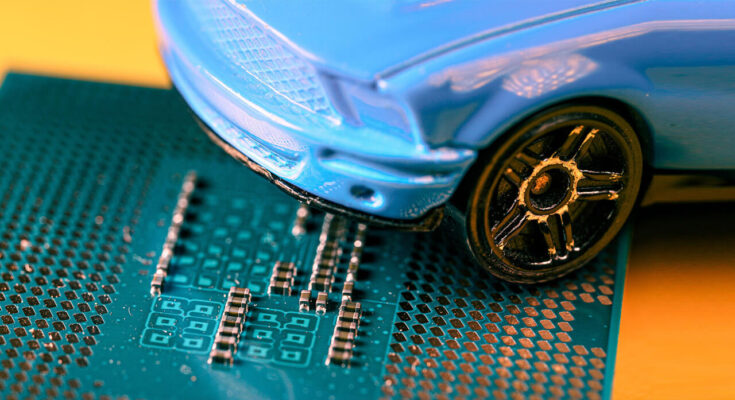When it comes to modern computing and data transfer, one acronym resonates with pivotal significance PCI Express (Peripheral Component Interconnect Express). This high-speed serial computer expansion bus standard plays a crucial role in the architecture of contemporary systems, facilitating the seamless flow of data between internal components.
In this comprehensive post, we peel back the layers of PCI Express, exploring its origins, development, and significant role in the computing industry.
The Genesis of PCI Express
The genesis of PCI Express can be traced back to the late 1990s when the technology landscape was witnessing a demand for faster and more efficient data transfer within computer systems. The existing PCI (Peripheral Component Interconnect) bus, while revolutionary in its time, was becoming a bottleneck as processors and graphics cards demanded higher bandwidths. In response to this challenge, the PCI-SIG (PCI Special Interest Group) introduced PCI Express as the evolution of interconnect technology.
PCI Express, first standardized in 2003, brought a significant changeby using a serial, point-to-point architecture in contrast to the parallel bus architecture of its predecessor. This fundamental change laid the groundwork for the enhanced speed and scalability that would become the hallmark of PCI Express.
Suggestion: Why Are My Brake Lights Staying On When Car is Off?
Unraveling the Architecture
At the core of PCI Express’s significance lies its architectural prowess. Unlike its parallel predecessor, PCI Express employs a serial point-to-point structure, where data moves through dedicated lanes. Each lane represents a one-way communication path. The number of lanes determines the overall bandwidth, allowing for higher data transfer rates but also enabling greater scalability by adding more lanes to meet the increasing demands of today’s applications.
The speed of PCI Express is often denoted by a numerical value followed by GT/s (gigatransfers per second). For example, PCIe 3.0 operates at 8 GT/s per lane, while PCIe 4.0 doubles that speed to 16 GT/s per lane. This relentless pursuit of speed is a testament to PCI Express’s commitment to keeping pace with the ever-growing appetite for data transfer in modern computing.
Bandwidth Bonanza
In the race pursuit of high-performance computing, bandwidth becomes a crucial asset. PCI Express, with its adaptable design, offers a wealth of bandwidth that caters to the demands of modern applications, from graphics-rich gaming to robust data centers.
The bandwidth offered by PCI Express relies on both the number of lanes and the version of the standard. For instance, a PCIe 3.0 x16 slot provides a maximum theoretical bandwidth of 128 gigabits per second (Gbps), while the newer PCIe 4.0 x16 slot doubles that to an impressive 256 Gbps. This bandwidth abundance ensures that data-hungry components, such as high-end GPUs and storage devices, can operate at peak efficiency, unleashing the full potential of cutting-edge hardware.
Versatility Unleashed
While PCI Express’s roots lie in catering to the demands of graphics cards, its versatility has propelled it into diverse phases within computing. The standard’s ability to handle a variety of traffic types makes it a versatile interconnect for an array of devices, ranging from GPUs to storage and networking components.
Also Check: How To Check The Compatibility of Car Parts?
As regards storage, PCIe has emerged as a cornerstone for NVMe (Non-Volatile Memory Express) SSDs, offering blistering data transfer speeds that redefine storage performance. Networking cards, too, leverage PCIe to ensure swift communication between servers, enabling the seamless flow of data in data center environments. This adaptability positions PCI Express as a unifying force, providing a common interface for an increasingly interconnected and data-centric computing landscape.
Future-Proofing Through Versions
PCI Express’s journey is one of perpetual evolution, with each new version pushing the boundaries of speed and efficiency. The PCI-SIG group consistently introduces new versions to match the increasing needs of today’s computing.PCIe 5.0 and PCIe 6.0, for example, have brought about unmatched data transfer rates, with PCIe 6.0 aiming for an incredible 64 GT/s per lane.
These ongoing improvements not only prepare computing systems for the future but also guarantee compatibility with older technology, enabling new and old components to work together smoothly. This commitment to evolution positions PCI Express as a resilient and forward-looking standard, capable of meetingthe demands of future computing.
The Ecosystem Impact
The impact of PCI Express extends beyond individual devices or systems;it resonates throughout the entire technology landscape.Its widespread use creates a universal language for hardware components, fostering an environment where innovation can thrive.
In the world of GPUs, for instance, its compatibility ensures that the latest graphics cards can seamlessly integrate into a myriad of systems, from gaming PCs to professional workstations. Similarly, the adoption of PCIe in storage and networking devices drives innovation by providing a standardized interface that transcends proprietary boundaries, allowing for the creation of diverse and compatible ecosystems.
Challenges and Innovations
While it has undoubtedly been a transformative force, the journey is not without challenges. The increasing need for bandwidth, driven by emerging technologies such as artificial intelligence and high-performance computing, poses a continual challenge to the standard. Innovations such as PCIe switches and accelerators are emerging to address these challenges, promising to open up fresh possibilities in data transfer and processing abilities.
As we navigate the road ahead, the importance of PCI Express becomes even more pronounced. PCI Express is tailored to various industry standards, including specialized versions like ARINC-429 PCI Express board or automotive-grade PCI Express. From gaming enthusiasts aiming for top-tier graphics performance to data center architects managing enormous datasets, expansion cards stand as a testament to the relentless pursuit of efficiency and speed in the digital age.
In the vast world of technology, where attention frequently focuses on flashy graphics and advanced processors, PCI Express stands as the unseen architect, skillfully coordinating the flow of data among devices. Its significance surpasses being just a technical specification; it is a foundational element that underpins the efficiency and performance of contemporary computing.
From its humble beginnings as a response to the limitations of its predecessor to its current status as a ubiquitous standard woven into the fabric of modern devices, expansion cards has come a long way. Its journey is one of adaptability, scalability, and a steadfast commitment to meeting the demands of an ever-evolving technological landscape.


















